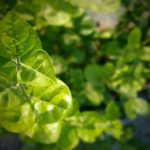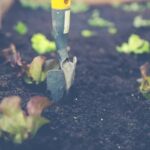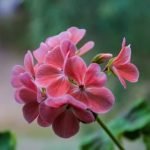Design ideas for woodland gardens bring together the enchanting beauty of nature with thoughtful planning and creative elements. Woodland gardens offer a unique opportunity to create a harmonious blend between the wild forest landscape and curated garden spaces. From pathways meandering through dappled sunlight to water features glistening among ferns and moss, there are endless possibilities to design a captivating woodland garden.
When venturing into the world of woodland garden design, it’s essential to consider various factors that will influence the overall look and feel of your outdoor space. Whether you’re drawn to native species for a more authentic woodland feel or exotic varieties for added color and texture, each plant choice plays a crucial role in shaping the ambiance of your garden.
Additionally, incorporating hardscape elements like natural stone accents can provide structure while maintaining the organic essence of the woodland environment.
By creating a pathway that winds through your woodland garden, you not only enhance accessibility but also invite visitors to explore and immerse themselves in the natural surroundings. A well-designed pathway can guide guests through different areas of your garden, offering glimpses of hidden treasures along the way. Consider adding seating areas or focal points along the pathway to create inviting spaces for contemplation and relaxation amidst the beauty of your woodland retreat.
Planning Your Woodland Garden
One of the key factors to consider when planning your woodland garden is the natural environment of the area. Take note of the existing trees, shrubs, and terrain to determine how you can work with these elements in your design. By understanding the unique characteristics of your woodland space, you can create a garden that complements and enhances its surroundings.
Another important aspect to consider is the amount of sunlight that reaches different areas of your woodland garden. Observe which areas receive full sun, partial shade, or full shade throughout the day. This will help you select plants that thrive in these light conditions and ensure that your garden not only looks beautiful but also remains healthy and sustainable.
When designing your woodland garden, think about creating different layers of vegetation to mimic the natural structure of a forest. Consider planting canopy trees, understory shrubs, ground cover plants, and climbers to add diversity and visual interest to your garden. This layering technique can help maximize space, provide habitat for wildlife, and create a more dynamic and harmonious landscape.
| Design Ideas | Woodland Gardens |
|---|---|
| Consider natural environment | Create a garden that complements surroundings |
| Observe sunlight conditions | Select plants accordingly for health and sustainability |
| Create different layers of vegetation | Mimic natural structure of a forest for diversity |
Choosing the Right Plants
When it comes to designing a woodland garden, one of the key decisions you’ll need to make is choosing the right plants. One important consideration is whether to incorporate native species or exotic varieties into your garden. Both options have their own set of benefits and considerations, so it’s essential to weigh your choices carefully.
Native Species: Enhancing Ecosystem Health
Native plants are those that naturally occur in a specific region and have evolved to thrive in that environment. By incorporating native species into your woodland garden, you can help support local wildlife by providing food and habitat. Additionally, native plants tend to be more resilient and require less maintenance than exotic varieties, making them a sustainable choice for your garden.
Exotic Varieties: Adding Variety and Visual Interest
On the other hand, exotic plants can add unique colors, textures, and forms to your woodland garden. These plants may offer a striking contrast to the surrounding landscape and create a visually appealing design. However, it’s essential to research the invasive potential of exotic species before introducing them into your garden to avoid disrupting the natural balance of the ecosystem.
Creating a Pathway
When designing a woodland garden, creating pathways is essential not only for accessibility but also for enhancing the overall aesthetics of the space. Pathways can guide visitors through the garden, offering them a chance to explore and experience its beauty up close. Additionally, well-designed pathways can add structure and definition to the natural chaos of a woodland setting.
Materials
One of the key decisions when designing pathways in a woodland garden is choosing the right materials. Natural options like gravel, wood chips, or stepping stones can blend seamlessly with the surroundings, creating a harmonious transition from the built environment to nature. Alternatively, you may opt for hardscape materials like flagstone or brick for a more formal look that still complements the organic feel of the garden.
Curves and Shapes
Instead of straight lines, consider incorporating curves and meandering shapes into your pathways. This not only adds visual interest but also mimics natural patterns found in forests and woodlands. Curved paths can create a sense of mystery and discovery as they lead visitors around bends and through different areas of the garden.
Lighting
To extend the enjoyment of your woodland garden into the evening hours, consider adding lighting along your pathways. Softly glowing lights can illuminate the way without overpowering the natural ambiance of the space. Solar-powered or low-voltage LED options are eco-friendly choices that will enhance both safety and aesthetics in your garden design ideas for woodland gardens.
Incorporating Water Features
Water features can add a sense of tranquility and serenity to woodland gardens, creating a peaceful oasis for both humans and wildlife. The sound of trickling water can mask undesirable noises, like traffic or neighborhood chatter, while also attracting birds and other wildlife to your garden. When incorporating water features into your woodland garden, there are several design ideas you can explore:
- Natural-Looking Ponds: Create a pond that mimics a natural water source by incorporating rocks, logs, and native aquatic plants. This type of water feature will blend seamlessly with the surrounding environment.
- Waterfalls: Introduce a waterfall into your woodland garden to add movement and visual interest. The sound of cascading water can create a soothing atmosphere and enhance the overall ambiance of the space.
- Bubbling Fountains: Opt for a bubbling fountain as a smaller-scale water feature that still provides the relaxing sound of flowing water. Place these fountains strategically throughout your garden to create focal points.
By carefully selecting and designing water features in your woodland garden, you can enhance its overall appeal and create a harmonious balance between nature and man-made elements.
Remember to consider the location, size, and maintenance requirements of each water feature before integrating them into your design plan for a successful outcome that complements the natural beauty of your woodland garden effectively.
Adding Hardscape Elements
When designing a woodland garden, it’s essential to find the right balance between the natural elements of the forest environment and the structured elements of a garden. One way to achieve this balance is by incorporating hardscape elements into your design. Hardscape elements can include pathways, patios, retaining walls, and other man-made features that add functionality and visual interest to your garden.
One popular hardscape element for woodland gardens is a rustic stone pathway. These pathways not only provide practical access through your garden but also add an element of charm and character. Choose irregularly shaped stones in varying sizes to create a natural look that blends seamlessly with the surrounding landscape. Meandering pathways can lead visitors on a journey through different areas of your garden, allowing them to fully experience the beauty of your woodland oasis.
Another hardscape element that can enhance the structure of your woodland garden is a wooden deck or bridge. These features can provide elevated viewpoints, seating areas, or even crossing points over streams or ponds.
Utilizing natural materials like wood helps to maintain the organic feel of the woodland environment while creating functional spaces for relaxation and enjoyment. Whether you opt for a small deck tucked away in a secluded corner or a picturesque bridge spanning a water feature, incorporating wooden hardscapes can truly elevate your garden design.
Attracting Wildlife
Creating a biodiverse ecosystem in your woodland garden not only adds vibrancy to the space but also plays a crucial role in the overall health of the environment. To attract wildlife, consider incorporating native plants that provide food and shelter for local species. Native plants have evolved with the local wildlife and are often better suited for attracting and supporting diverse populations of birds, bees, butterflies, and other creatures.
Another way to attract wildlife to your woodland garden is by including features such as bird feeders, bird baths, or even bat boxes. These additions provide essential resources for various animals while also offering you the opportunity to observe and appreciate them up close. Additionally, consider leaving some areas of your garden untouched or creating brush piles where small animals can find refuge.
Water sources are vital for attracting wildlife to your garden. A small pond or birdbath can serve as a gathering place for birds and other creatures seeking hydration. Incorporating water features not only adds visual interest to your woodland garden but also creates a tranquil atmosphere that both you and the wildlife can enjoy. Remember to regularly maintain these water features to ensure they remain clean and safe for visiting animals.
| Design Ideas for Woodland Gardens | Attracting Wildlife |
|---|---|
| Consider using native plants | Including bird feeders and baths |
| Create refuge areas like brush piles | Installing water features like ponds or birdbaths |
Maintaining Your Woodland Garden
Maintaining a woodland garden is essential for ensuring its long-term success and beauty. Here are some tips to help you keep your woodland garden thriving year after year:
First and foremost, regular maintenance is key to keeping your woodland garden in top shape. This includes tasks such as weeding, pruning, and mulching. Weeds can quickly take over in a woodland setting, so be sure to stay on top of removing them to allow your plants to flourish. Pruning helps maintain the health and shape of your plants, while mulching helps retain moisture in the soil and suppress weed growth.
Another important aspect of maintaining a woodland garden is monitoring the health of your plants. Keep an eye out for signs of pests or diseases, and address any issues promptly to prevent them from spreading. Regularly check for any watering needs, especially during dry spells, to ensure that your plants are getting the necessary hydration.
In addition to regular maintenance tasks, it’s also important to periodically assess and adjust your design as needed. Over time, certain plants may outgrow their space or require dividing, while others may need more sunlight or water than originally anticipated. By staying proactive and making adjustments when necessary, you can ensure that your woodland garden continues to thrive for years to come.
Inspiration Gallery
When looking for design ideas for woodland gardens, it can be helpful to draw inspiration from stunning examples that showcase the beauty and creativity of these natural spaces. Here are a few standout designs that can spark your imagination:
- Enchanted Forest Retreat: Create a secluded oasis in your woodland garden by incorporating winding paths, moss-covered stones, and dappled sunlight filtering through the trees. Add cozy seating areas tucked away among the foliage for a magical hideaway.
- Wildflower Meadow Paradise: Embrace the wild side of your woodland garden by allowing native wildflowers to take center stage. Plant colorful blooms like trilliums, bluebells, and ferns to create a vibrant display that attracts pollinators and adds a burst of color to shady areas.
- Serene Woodland Pond: Transform a quiet corner of your garden into a tranquil water feature by adding a small pond or stream surrounded by lush greenery. Incorporate water lilies, irises, and floating plants to enhance the natural beauty and provide habitat for aquatic wildlife.
Incorporating elements such as meandering pathways, rustic seating areas, and artful plantings can help you create a woodland garden that feels like a true escape into nature. By carefully selecting plants, hardscape materials, and water features that complement the existing landscape, you can design a space that is both visually stunning and ecologically rich.
Whether you prefer a more formal layout with defined edges and clean lines or a more organic approach with winding paths and hidden surprises around every corner, there are endless possibilities for creating your own unique woodland garden design. Remember to consider factors such as light levels, soil quality, and moisture requirements when planning your garden to ensure long-term success and enjoyment.
Conclusion
In conclusion, woodland gardens offer a magical and enchanting escape right in your own backyard. By carefully planning and designing your woodland garden, you can create a serene and stunning oasis that not only enhances the beauty of your outdoor space but also provides a habitat for native wildlife. From choosing the right plants to incorporating hardscape elements and water features, there are endless design ideas for woodland gardens that can transform your yard into a peaceful retreat.
One of the key aspects of designing a successful woodland garden is balancing nature with structure. This can be achieved by creating meandering pathways that wind through the garden, allowing visitors to explore and appreciate the natural beauty around them. By incorporating hardscape elements such as stone walls or wooden benches, you can add both functionality and visual interest to your woodland garden while maintaining its organic feel.
Furthermore, attracting wildlife to your woodland garden not only adds to its charm but also helps create a biodiverse ecosystem. By planting native species, providing food sources, and creating shelter opportunities, you can invite a variety of birds, insects, and other creatures to make your garden their home. In the end, embracing the magic of woodland gardens is about connecting with nature, finding peace in its tranquility, and experiencing the beauty of the natural world right outside your door.
Frequently Asked Questions
What Is Woodland Landscape Style?
Woodland landscape style emulates the natural beauty of a forest setting, incorporating elements like trees, shrubs, wildflowers, and rocks to create a serene and rustic environment. This style often includes dappled sunlight filtering through tree canopies, winding pathways, and a variety of plants that thrive in shade.
What Tree Is Best for Woodland Garden?
When it comes to choosing the best tree for a woodland garden, it is essential to consider native species that will thrive in a shady environment. Trees like oak, maple, dogwood, and birch are well-suited for woodland gardens due to their ability to tolerate low light conditions and enrich the soil with their fallen leaves or needles.
What Is the Best Ground Cover for a Woodland Garden?
The best ground cover for a woodland garden is one that can thrive in shade while providing a lush carpet of foliage to complement the surrounding plants and trees. Ground covers such as ferns, hostas, creeping phlox, or foamflower are ideal choices for adding texture and color to the forest floor.
These plants also help suppress weeds and retain moisture in the soil to create a thriving ecosystem in a woodland garden.

Welcome to my gardening blog! I am passionate about plants and enjoy sharing my knowledge and experiences with others. In this blog, I will write about everything related to gardening, from tips on how to get started to updates on my own garden projects.





